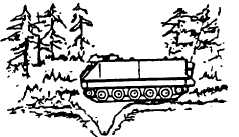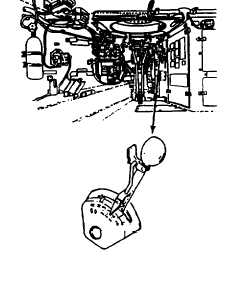Carrier movement
can
throw you
from your seat.
and injure you.
Use of seat belts is
mandatory. See
warning in front of manual.
1.
2.
2.1
Engine started (page 2-161)
Ramp raised and locked
(page 2-153)
Ensure that all personnel are
in their proper positions se-
cured with seat belts and
wearing protective headgear.
Check that the intercom is
connected to the Track Com-
mander (TC. Prior to moving,
ensure personnel in hatches
are not exposed more than
head and shoulders to the
level of their name tags,
exception is made when firing
weapons.
DRIVING PRECAUTIONS
3.
Use the 1-2 range until you
get. used to driving the carrier.
TM 9-2350-261-10
4. Take care not to oversteer or go
too fast, especially on hard pave-
ment. You could lose control of
the carrier.
5. Push the air control in to open
the valve and let the engine
breathe cooler air from the rear
compartment. This will give the
engine a boost in horsepower.
6. Decelerate as the carrier
approaches the edge of a ditch or
trench. Use gear range 1 or 1-2.
Just as carrier bottoms out in a
ditch or trench, accelerate and
use full power as the carrier
starts to climb. Maximum width
of trench safely crossed is 5-1/2
feet (1.67 m).
GO TO NEXT PAGE
Change 5
2-177







